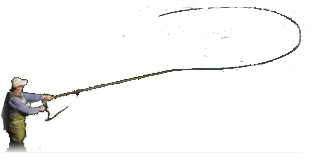 Re: I've read AC's graphite building series and have some ?s
Re: I've read AC's graphite building series and have some ?s
Most of your questions have been answered, but I have a couple of observations.
First, once you spine the rod, sight down the rod to make sure it is straight. A lot of blanks will have a slight curvature in them that may or may not match up to the spine. If that is the case, make sure you place the guides on the curve and forget the spine. The curve should be aligned with the casting plane.
You can practice your wrapping on the blank itself. You can always cut off wraps you don't like. What you need to practice is applying the epoxy. If you goof up here, its hard to correct. You can practice on any round rod, it doesn't have to be a blank. It can be a wood dowel for that matter.
I disagree that a 2 piece rod is easier to wrap than a 4 piece. I think a 4 piece is easier. Just remember to connect the adjoining pieces together when you do you ferrule wraps.
Also check out http://www.rodbuilding.org
Lots of good info from people that do it for a living.
You don't ever want a crisis to go to waste... - Rahm Emanuel
Who is John Galt?





 Reply With Quote
Reply With Quote